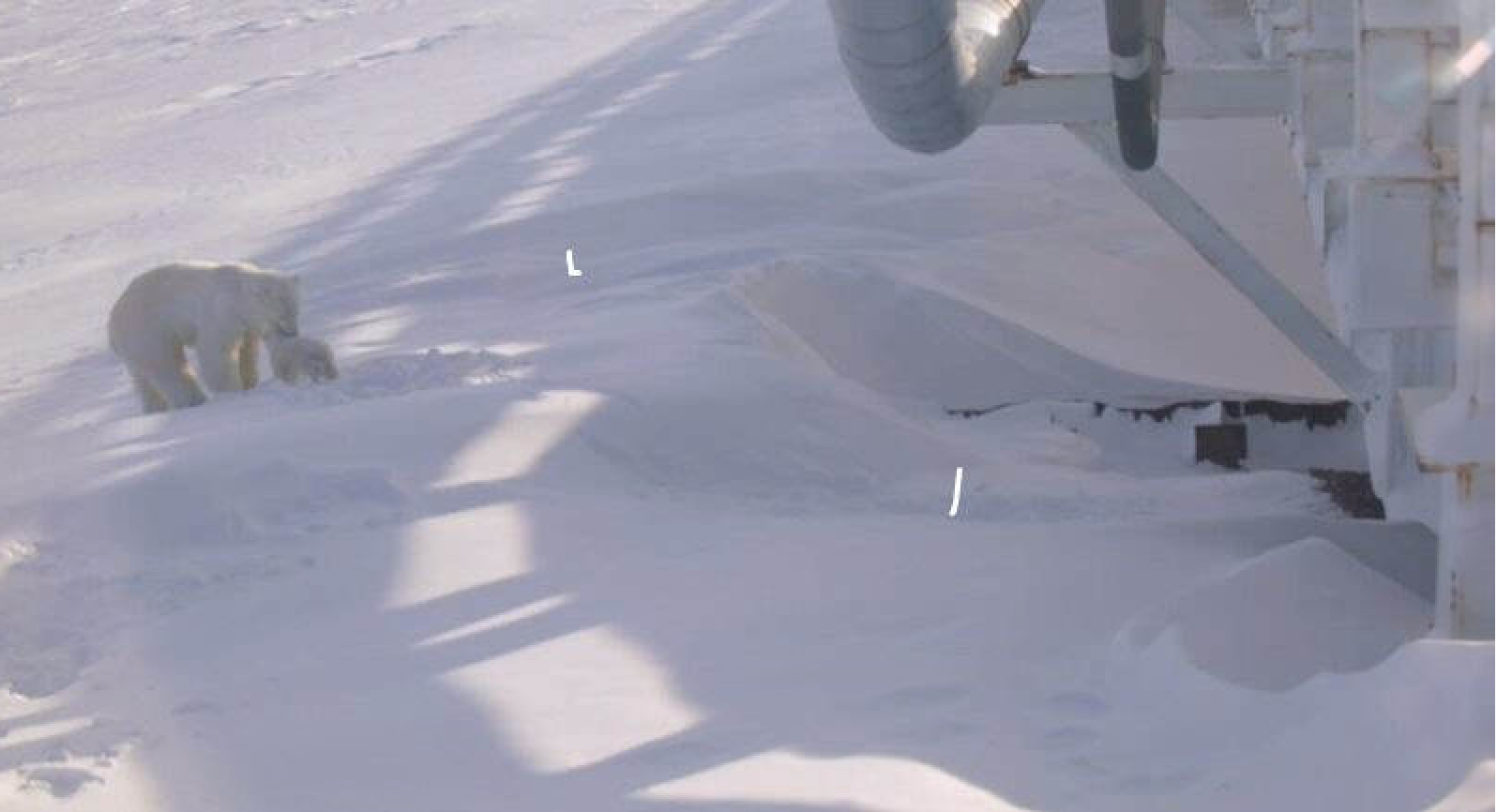July 2017, Vol. 244, No. 7
Features
Pipeliners Keep Protective Eye on Pregnant Polar Bear

A pregnant polar bear found an unusual spot to dig her maternity den, selected a bank of snow bank along a bridge leading to an artificial production island near Prudhoe Bay, AK – and operating company Hilcorp Alaska couldn’t be happier.
“I’ve worked in the area for several years, and while you prepare and plan for polar bears in the area, this was the first time we had encountered a situation like this,” said Beth Sharp, Hilcorp Alaska’s wildlife specialist, told P&GJ. “It’s great that we were able to have a positive result in this situation. Seeing a healthy mom and cub emerge is what we were all working toward.”
As a threatened species, polar bears are entitled to peaceful pregnancies, and Hilcorp took measures to ensure the soon-to-be mother bear was not disturbed. After conferring with federal wildlife authorities, the company restricted traffic on the causeway, kept a close watch on the den and tried to maintain quiet until the cub was born three months later.
In December, a Hilcorp security officer spotted a hole in a snow drift along the 1.5-mile causeway leading to Endicott Island, a 45-acre production area, and workers used an infrared camera to photograph the pregnant bear inside the snow drift. Conservation group Polar Bears International (PBI), which conducts an annual polar bear denning survey, was able to monitor the den with a remote camera system in what turned out to be a group effort involving the public and private partners.
“We were so fortunate to have the ability to monitor the den from our facility 24-7,” said Sharp. “Knowing what was going on at the den site and coordinating with the [U.S. Fish and Wildlife] Service helped us ensure we didn’t disturb the bears. It was so amazing to see the new mother and her cub pop into the world for the first time from their snowy cave.”
The effort to monitor the situation was especially significant because polar bears, which don’t hibernate, frequently abandon cubs if they are disturbed during nursing, according to the Fish & Wildlife Authority. This contributes to about half of all cubs not surviving an entire year.
“We received a phone call from Hilcorp in January to see if we could help monitor activity at the den site with one of our remote cameras,” B.J. Kirschhoffer, PBI director of field operations wrote in in the group’s Spring newletter. “It goes without saying we were keen to help – not only to assist this individual family, but also to gain knowledge that will help in better protecting denning polar bears across the Arctic.”
The mother bear and cub left the den March 18, spending two weeks nearby, before eventually heading off to sea ice to hunt for seals.





Comments